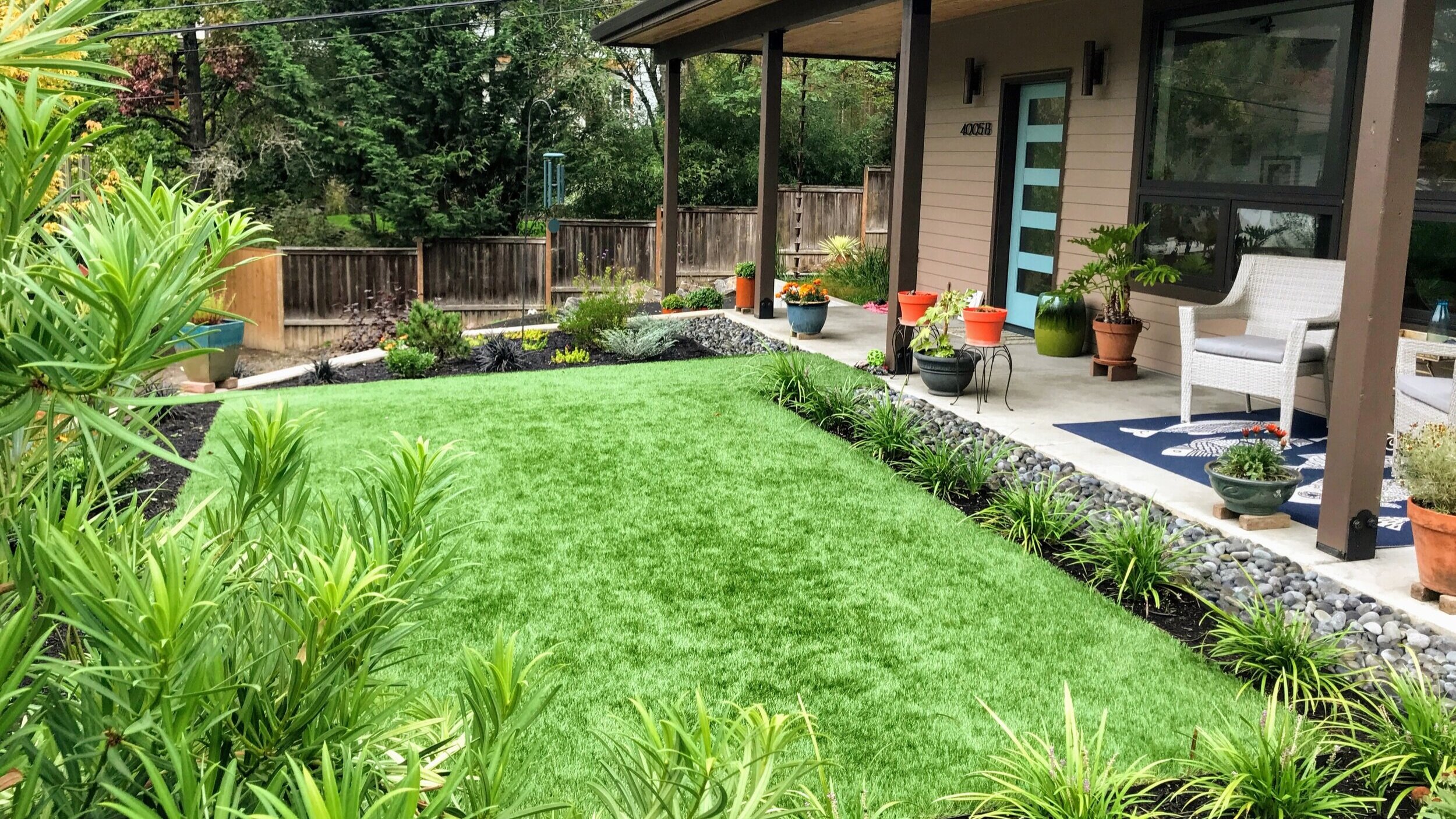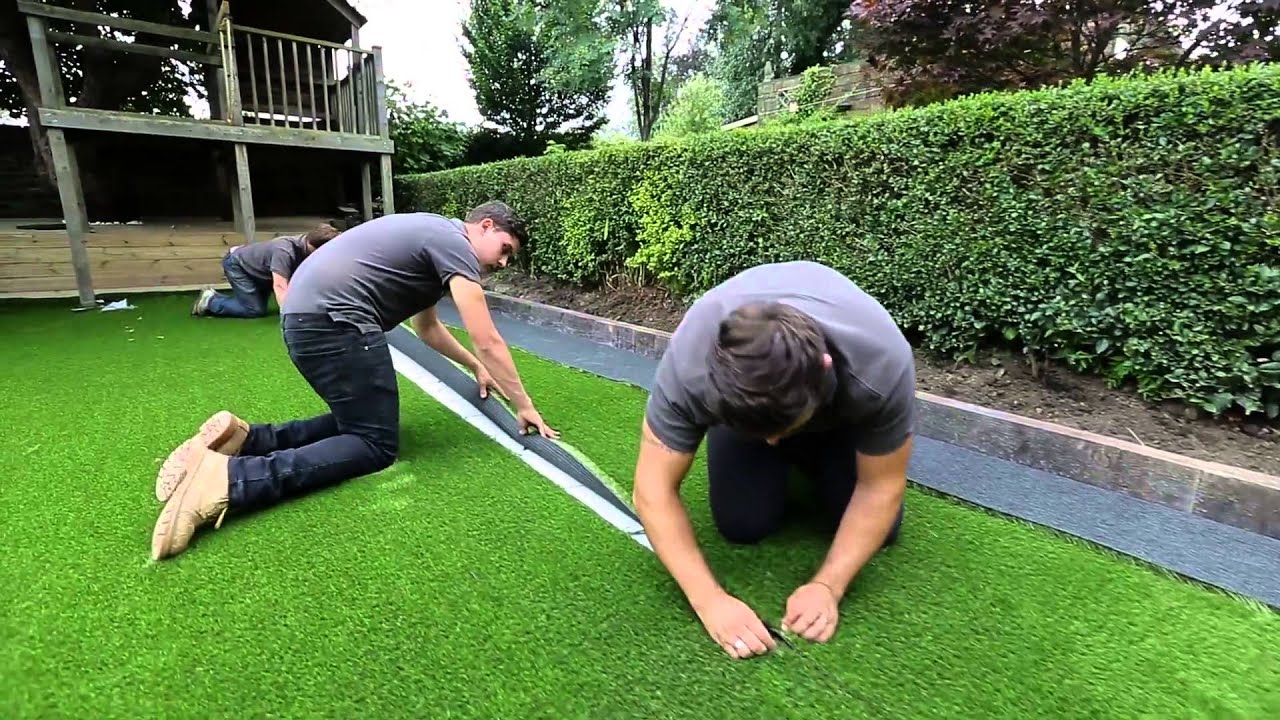Weather-Resistant Arizona Artificial Turf for Home and Commercial Applications
Wiki Article
Explore the Environmental Conveniences of Opting for Synthetic Grass Solutions
The fostering of man-made grass solutions provides an engaging chance to attend to pressing ecological difficulties. By considerably reducing water usage and minimizing the application of unsafe chemicals, these options not only promote lasting landscape design but additionally secure regional communities.Water Preservation Advantages
One of the most substantial benefits of synthetic lawn is its ability to save water. In comparison, artificial turf does not need watering, considerably reducing the total demand for water resources.By getting rid of the requirement for regular watering, synthetic grass contributes to sustainable landscape practices and assists reduce the ecological effect of excessive water intake. The preservation of water prolongs to the reduction of drainage, which can lead to dirt erosion and river pollution.
Additionally, the installment of artificial turf permits districts and homeowners to allocate water resources extra successfully, concentrating on necessary usages such as alcohol consumption water and farming. The shift towards synthetic grass not only advertises responsible water usage yet also lines up with broader environmental goals focused on maintaining natural sources.
As neighborhoods increasingly prioritize sustainability, the water conservation advantages of synthetic grass present a compelling case for its adoption in commercial and residential landscaping projects.
Minimized Chemical Usage
The transition to synthetic lawn dramatically lowers the dependence on chemical therapies commonly made use of in all-natural lawn maintenance. Conventional lawn management commonly involves the application of plant foods, herbicides, and pesticides to promote development and control bugs. These chemicals can present threats to human wellness, neighborhood wild animals, and the setting, adding to soil and water contamination.In comparison, fabricated grass eliminates the need for these hazardous materials. By decreasing the launch of artificial substances right into the ecological community, man-made turf advertises much healthier soil and water systems.
Additionally, the absence of chemical drainage connected with synthetic grass installations assists protect local rivers from air pollution, supporting aquatic life and keeping biodiversity. Arizona artificial turf. As communities increasingly prioritize sustainable techniques, going with synthetic turf provides a viable solution that lines up with ecological preservation objectives. Via this change, building proprietors can take pleasure in rich environment-friendly rooms without compromising environmental health, paving the method for a more sustainable future
Reduced Carbon Impact

In addition, the setup of synthetic grass can cause significant water preservation. All-natural grass need significant amounts of water for watering, which not only includes to the carbon impact related to water extraction and treatment yet also pressures local water resources. On the other hand, artificial lawn needs marginal maintenance, requiring no watering, thereby significantly lowering water usage and its associated More Info power prices.
In addition, the durability of artificial grass adds to its decreased carbon effect. With a life-span of as much as 15 years or more, the demand for frequent substitutes is decreased, leading to less waste and reduced power intake in production and dealing with traditional lawn choices. Generally, artificial turf provides a lasting alternative for ecologically aware landscaping.
Environment Conservation
Environment preservation is a critical factor to consider in the debate over landscaping selections, especially when contrasting fabricated lawn to all-natural grass. Natural turf lawns usually call for comprehensive maintenance, including making use of fertilizers, chemicals, and herbicides, which can negatively influence local ecosystems. These chemicals can seep right into the dirt and waterways, hurting native flora and fauna and disrupting regional environments.
Synthetic grass gets rid of the requirement for hazardous chemicals, thus protecting neighboring wildlife and preserving the honesty of surrounding ecological communities. The installation of fabricated turf can lead to the conversion of former lawn locations into more biodiverse landscapes, such as pollinator yards or indigenous plant areas, which can support regional wild animals.
Eventually, the transition to synthetic grass not only preserves water and reduces maintenance initiatives yet likewise fosters a more unified relationship in between human activities and the natural surroundings, advertising environment preservation in the process.
Long-Term Sustainability
Long-lasting sustainability is an important variable in assessing the advantages of synthetic grass over typical grass lawns. Among one of the most substantial advantages of fabricated turf is its sturdiness; it can last approximately 15-20 years with marginal maintenance, whereas natural turf needs frequent reseeding and replacement. This longevity minimizes the need for constant my company resources, such as water, plant foods, and pesticides, which are important for keeping a healthy turf yard.In addition, synthetic grass contributes to a decrease in carbon exhausts connected with lawn care tools. Traditional yards frequently require gas-powered mowers, trimmers, and blowers, every one of which add to air pollution. Artificial turf companies phoenix. On the other hand, synthetic grass removes the demand for such equipment, promoting a cleaner atmosphere
Additionally, the manufacturing of fabricated lawn progressively utilizes recycled products, boosting its sustainability profile. As makers take on green methods, the ecological impact of synthetic grass remains to decrease.

Conclusion
basics The adoption of synthetic turf options presents substantial ecological benefits, including considerable water preservation, minimized reliance on harmful chemicals, and a reduced carbon impact. In addition, synthetic grass help in protecting all-natural environments by decreasing land disruption and promoting long-term sustainability with using sturdy materials. Jointly, these elements underscore the capacity of synthetic grass to contribute favorably to ecological wellness and use a practical alternative to standard landscaping practices in a significantly resource-conscious world.In contrast, synthetic lawn does not require watering, significantly reducing the general need for water resources. By minimizing the launch of synthetic compounds right into the environment, fabricated turf advertises much healthier soil and water systems.
In addition, the installation of man-made grass can result in substantial water conservation. In comparison, synthetic grass needs very little maintenance, requiring no watering, thereby significantly decreasing water usage and its linked energy expenses.

Report this wiki page